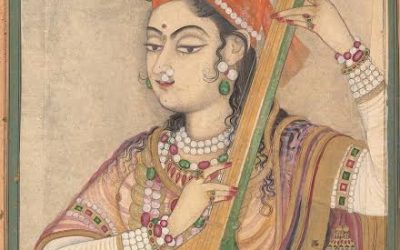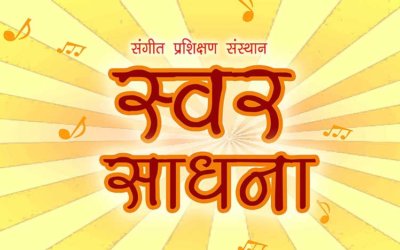Naad
“Nakaar” is Pran vachak and “Dakaar” is Agni Vachask. Therefore the sound which is generated from the connection of air and fair is called as Naad. Usually two types of naad are there: Ahat and Anahat. Both the Naad have appeared in the body, so the body is described.
Anahat Naad
The naad which are known only through experience and which have no special reason to be born, which is produced automatically without any struggle, is called Anahat Naad; like when we tightly close both the ears and will experience a soft continuous and solid sound. After this, when we woke up from the state of deep meditation, the sound heard that are similar to the cloud roaring or vowel voice. This Anahat naad used to be worshipped by our ancient sages. This sound gives emancipation but does not give incarceration. Thus this is not used for music, meaning there is no relation of sangeet and anahat naad.
Ahat Naad
The sound which is heard with ears and which is produced by the rubbing of two things is called as Ahat naad. This Naad has a special connection with music. With appropriate examples, it proves that ahat naad is useful for music. By this Naad, Sura, Mira, etc. had attained the sovereignness of the Lord and then obtained freedom from worshipping the Anahata naad.
Nature Qualities of Naad
It is known from the nature of naad that the voice that is coming in from a person or is coming out of some instrument. For example, a naad coming from Harmonium, Sarangi, Sitar or Bela and second naad from the voice of a singer, we can tell without seeing the action of naad, which is the name of the instrument and which of the singer.
The scientific reason for the differentiation of naad is due to the intensity of the sub-vocals generated from any object. Each sound contains a mixture of many other sounds, whose frequency increases progressively by double, triplicate, quadruple etc. with the fundamental tendency. Except for the original sound in which the cord is fixed, the remaining sounds are called “upswar” (sub-tones). Due to the intensity of these upswar, nature or quality distinction arises in naad. That is, naad differs from other on the basis of intensity and its exact position. The upswar arising from a single instrument or vocal is different from the upswar produced from the other instrument or voice. That is why we can able to recognize the different dhwani produced from different instruments. If the accentuation of the upswar will not have a connection with the nature of original accentuation then noise will heard like a sound of striking a metal sheet.
But when we oscillate a sitar’s strings, then it vibrates. That vibration affects the jawari. The extention of the Jawari’ are kept on Tabli, hence the impact of which the vibration can feel on tabli. The effect of this
vibration can felt by the surrounded air. Many sub-tones become intense in this process. The same process/action is also done in the instruments like Sarod or Veena. But because of their texture and size variation, the intensity of upswar also varies. This is the scientific principle of the nature and characteristics of different naad. Similarly, when we speak or sing something, the air comes from the larynx to the mouth, the effects of which shows on the sound produced by the structure of our throat, teeth and tongue and the intensity of the upswar. So our voice will be different from each other, as the structure of each person’s larynx, mouth, teeth and tongue are different. This is the main reason for naad differentiation.



0 Comments